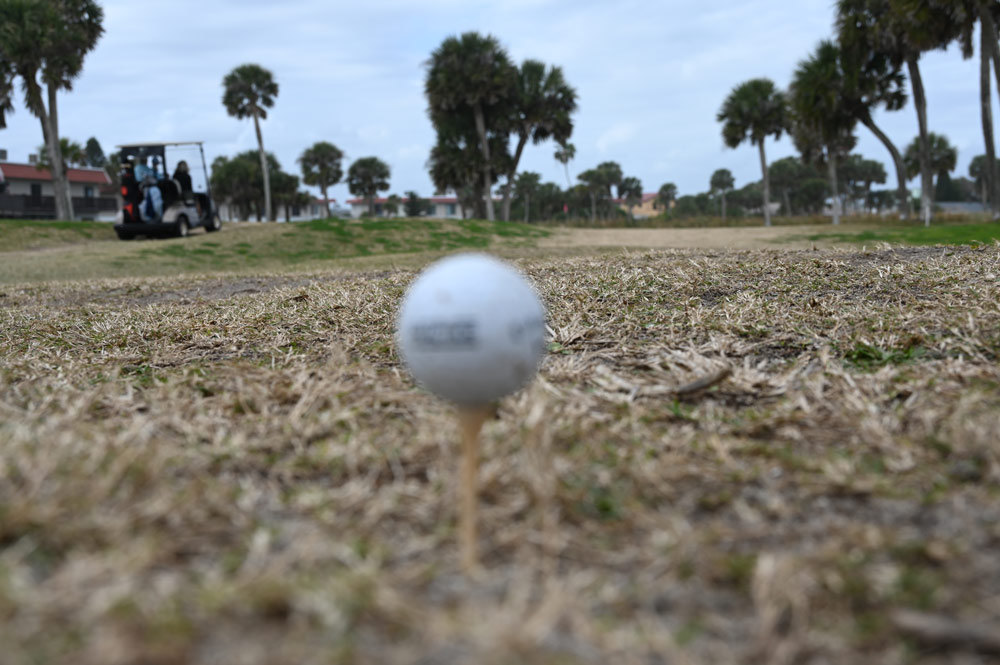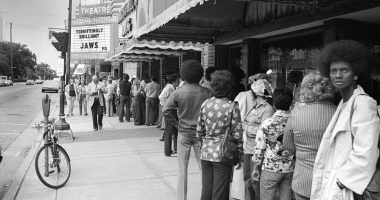
Even as it has received appraisals for the property, the Flagler Beach City Commission again said last Thursday that whatever may or may not happen with Ocean Palm Golf Club, the nine-hole course at the south end of town, is in the earliest stages. Talk of its sale and a conceptual site plan for a 30,000 square-foot building there are all preliminary.
Residents who neighbor the course raised doubts again at the meeting, suggesting that the plan is further along than the city claims, and that a workshop is in order. They also complained about the course’s current condition.
“There’s been nothing brought before this commission as far as the sale of a golf course yet,” Commission Chair James Sherman said. “We have appraisals.” But he pushed the administration to make more information available to commissioners, in case the topic is again addressed publicly.
City Attorney Drew Smith made the distinction between the conceptual site plan the golf course operator, Jeff Ryan submitted to the city, and the more formal site plan that would be required. Conceptual site plans require no approval.
“The city started allowing conceptual site plans many years ago for developers,” Smith said, allowing developers to informally show a plan to the city and say: “‘This is what we think we want to do, right? Tell us that this is what you want before we spend the money to check those boxes.’ So you don’t get the formal approvals without that. There is no site plan approval on that. That would be something that would come if there were a sale. After that sale is when they would come in with their own formal site plan.”
But City Commissioner John Cunningham said residents are not exaggerating when they complain about the dismal condition of the course. “I went there and seen the golf course, and that’s horrendous,” he said. “They’re not joking when they say there’s five-gallon buckets for the buttonholes on the green. It’s not green, it’s dirt.”
The previous leaseholder of the course was chronically at loggerheads with the city over its checkered maintenance of the acreage. Commissioner Eric Cooley said the current leaseholder should be held to the same standard. “No matter what you plan on doing with the golf course, you still have a lease to follow,” Cooley said.
One of the four individuals who addressed the commission asked for “some assurance that you will look at it from our perspective, and that we don’t just rush this thing through.” He cited the city’s recent flub–the downtown Margaritaville hotel that rose higher than it was supposed to–to press for more upfront oversight. Another described the current golf course grounds as “a desert,” with a clubhouse lacking air conditioning and “random events.”
Richard Phelan, an Ocean Palm Drive resident, pointed out discrepancies in the acreage (43 acres in one place, 38 acres in another, seeming discrepancies in the impervious area acreage) to say that the document is “flawed.” Mark Inhoff, also an Ocean Palm Drive resident, described himself as a “disappointed citizen and taxpayer without representation” before addressing the thousand pages of records he says he’s reviewed about the golf course.
“ Imagine for a minute if New York City had decided to sell off the land, now known as Central Park. This, in my opinion, is exactly what those before me are planning to do,” Inhoff said. (The comparison is not exact: Most of Central Park’s 840 acres are open to the public as a city park. The golf course is a pay-for-play service leased to its operator as a private business.)
Inhoff, without evidence, blamed the operator of not properly maintaining the course in order to affect its appraisal (the lower the appraisal, the lower the cost of purchase.) He accurately pointed out the precedent in Palm Coast where the Matanzas Woods golf course, held in private hands, went into disuse, was sold, then converted to single-family housing.
“I don’t want that,” Ihoff said. “Imagine for a second you have property. You live next door to it. You have someone lease it. They screw it up, then you lease it to another guy. He screws it up even more. And then you go, Okay, let’s get it appraised. It’s a low appraisal, and you sell it to them. That is the definition of insanity.”
Commissioner Eric Cooley said the commission has not rushed anything since it has not yet even gotten involved in the process–at least not formally. He said commissioners may not get involved in administrative proceedings. That’s where the proposed sale is being discussed at this point. If administrators or even commissioners are meeting with the operator on a one-on-one basis, he said, there are no requirements to keep records of those meetings.
“The ball is in the court of the developer who’s exchanging information with staff who are ultimately going to come up, presumably, with some sort of a plan,” Commissioner Scott Spradley said. “At that point, it will come before the board, and we’ll have public meetings on it, but it has not happened yet.”
The proposed sale would not go before the city’s planning board. It would go straight to the City Commission. Once the sale is approved, if it is approved, any planned construction of note on the course would start its regulatory steps with the planning board, not the commission. The planning board would make its recommendations and send those to the commission. Obviously, the commission would have to agree to a sale before getting to that point.
Cunningham, the city commission’s newest member, made the startling suggestion that as all options should be considered for that golf course acreage, one of them could be to use the site for flood control. “You could dig a 40-acre lake there, however big it is,” Cunningham said, “ and set up pumps for flooding, and pump the water up into the lake, then you have lakefront property. I mean, I’m just thinking outside the box, because that’s stuff that I know.”









